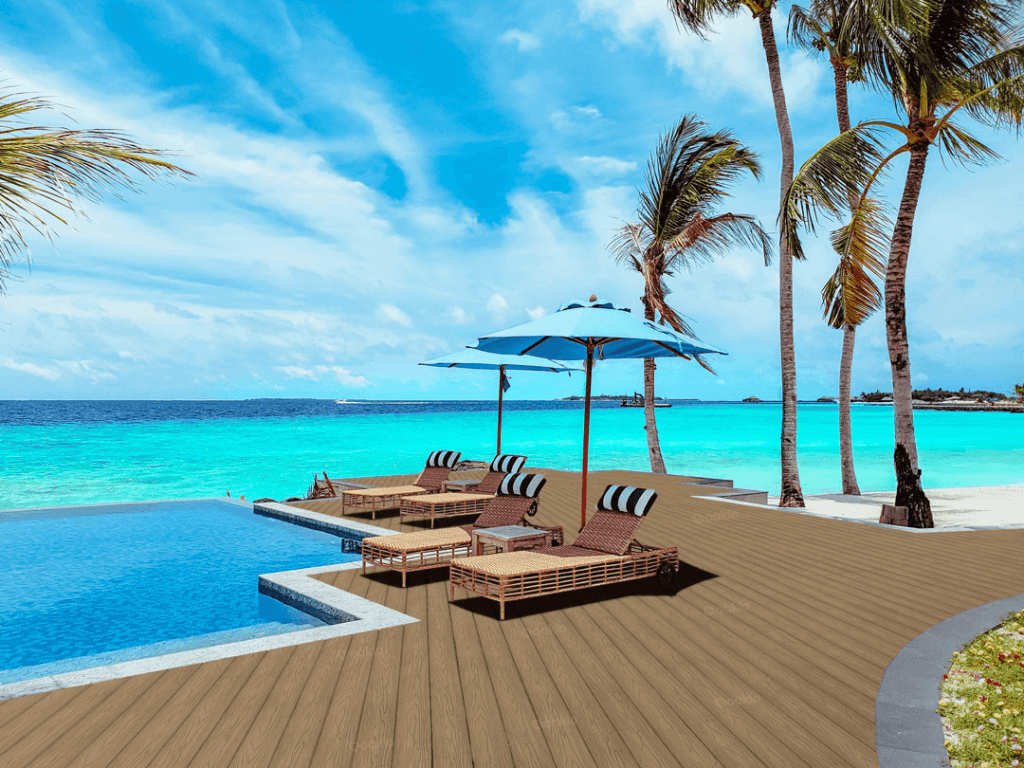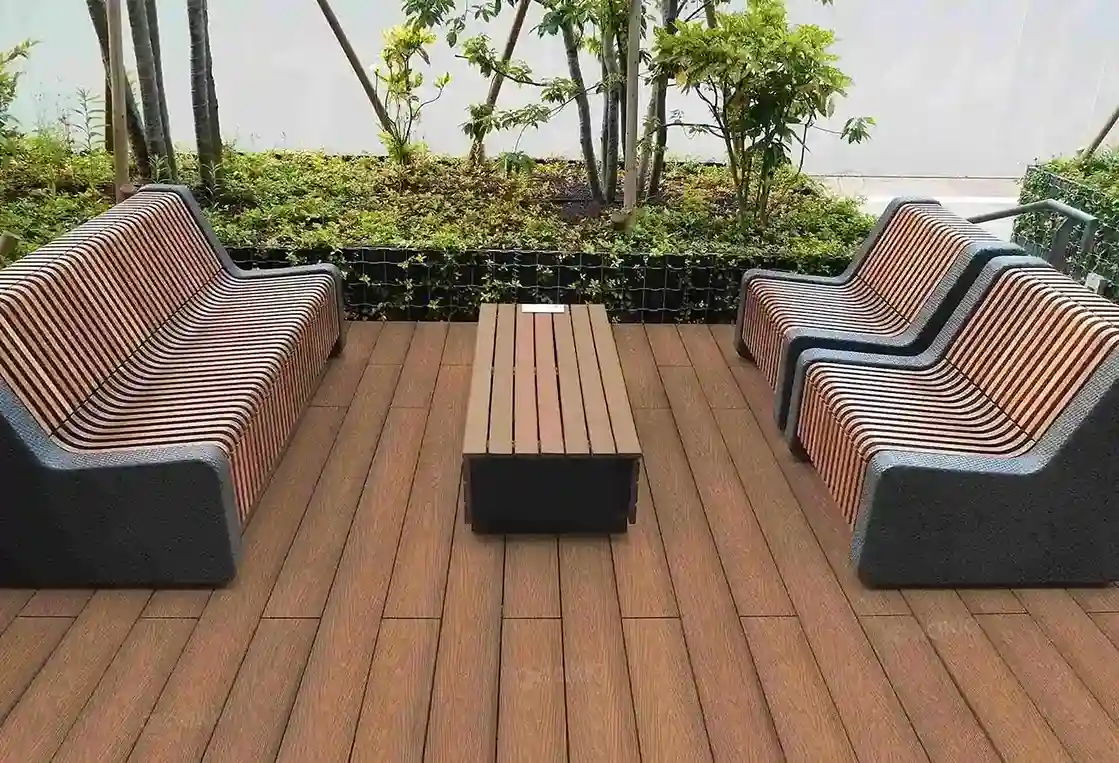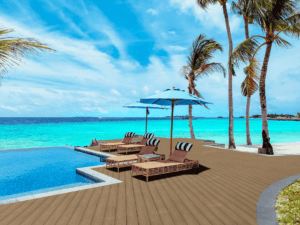When is the Best Time to Build a Deck?
Outdoor spaces are great additions to any household—offering a great place to relax, engage in some chitchat, and enjoy the outdoors. Pair it up with a sturdy and beautiful deck, and you’ll be welcomed by a warm and inviting space.
If you’re considering building one for your outdoor space, it begs the question: when is the best time to build a deck? It is important to prepare and ensure that whatever you build stands the test of time and nature.
Living in a warm and humid area or a snowy and cold region may get you thinking about when it’s a good time to build. In this article, we’ll tackle that and give you various tips to help you out.
Understanding Your Local Climate

Before starting your deck construction, understanding your local climate is a must to ensure the process can be as seamless as possible. Weather conditions can delay and slow down progress and impact the deck’s durability.
Knowing what weather conditions to expect can help you decide when choosing the deck material and style.
Extreme Cold
Extremely cold weather can be detrimental to your project for a variety of reasons. One, building a deck as it snows is particularly difficult and unsafe for you, should you decide to DIY. In such cases, it is better to let the professionals handle it, as they have the specialized experience and equipment to handle the complexity of such projects.
Second, extreme cold can induce rotting, cracking, or warping of untreated wood as it expands and contracts depending on the temperatures. Composite materials, on the other hand, resist moisture and temperature fluctuations better than wood—making them better for cold regions.
Extreme Heat
Extreme heat can also cause warping and cracking because it causes the wood to dry out and lose its moisture, which is important to keep wood fibers intact. Even if you use heat-resistant composites, the heat may make construction a little more difficult, especially if the color of your deck is dark. That may cause the deck to absorb and radiate too much heat, making it difficult to handle.
Building a lightly-colored composite deck can be done to fix this. You can also add a pergola or a roofing system to assist against extreme heat.
Extreme Humidity
Aside from extreme cold and heat, humidity also plays a damaging role in untreated and unsealed wood. Though wood has a certain humidity level, too much humidity can actually lead to warping, mold growth, or swelling.
Composite materials, in contrast, handle high humidity better—making them a better option if you live in a humid area.
Why Composite Decking is the Best Choice
When deck durability and design flexibility are discussed, composite decking is often the best choice if you want your outdoor space leveled without skimping on weather resistance. Unlike wood, which splinters, warps, and rots under extreme weather, composites are unhinged.
In extreme cold, composite decks can resist cracking and warping. As for extremely hot weather, they can resist cracking and splintering caused by wood fibers drying out. In humid weather, they can also resist swelling and the growth of mold and mildew.
All of these characteristics of composite materials are because of their unique blend of durable materials: wood fibers and weather-resistant plastics. They’re also low-maintenance and easier to clean than wood decks.
So if you’re looking for an all-around, all-weather decking solution, composites should be your top choice—giving you the best value for your money in the long run.
The Pros and Cons of Building On and Off-Season
Building a deck in an off-season has potential benefits and drawbacks—all of which have a significant impact on your building process and the overall durability of your deck. It’s important to weigh your options and consider important factors that will help you to answer the question of when the best time to build a deck is.
Pricing
On-Season (Spring and Summer)
The summer and spring seasons are the busiest periods for construction projects. Few to no weather-related disturbances can delay a project, making these seasons the optimal months to build.
The real drawback to on-season construction is that prices, such as material and labor, increase as the demand is usually higher. Contractors are also often booked during these seasons, making it harder and pricier to build a deck.
Off-Season (Fall and Winter)
The off-season, like the fall and winter, can be a great opportunity to cut down costs related to inflated demand in the on-season. Contractors during these seasons usually have fewer projects due to challenging construction conditions, making them open to discounts and certain deals.
The drawback, however, is that weather conditions like heavy rainfall and snow may delay your deck project with a less experienced team, aside from material costs increasing due to challenging logistics and added weatherproofing features that the construction project may need.
Timelines and Schedules
On-Season
During spring and summer, construction companies and contractors are also often heavily booked. It may be a lot more difficult to find a contractor, let alone one that will work on a timeline that is appropriate for you. If you do manage to book a contractor focused only on your project, you can rest assured your project will breeze through quickly with optimal weather in place.
But be reminded that though these seasons have favorable weather ideal for building a deck, the high demand during these times can extend the overall completion timeline of your project as some contractors may have manpower and equipment issues.
Off-Season
Building in the off-season can mean a faster turnaround time for your contractor, since they have more availability to focus on your deck, and their resources are not divided into different projects.
The problem arises with weather conditions, as heavy snow or rain can halt the construction process and delay the delivery of materials needed for your deck. Additional steps such as snow removal and weatherproofing mean more time is needed to complete the project.
Availability of Labor and Materials
On-Season
Since most construction companies and contractors are fully booked during these seasons, the challenge to get experienced labor and high-quality materials is also pronounced. You may have a difficult time finding skilled laborers and also have a difficult time sourcing materials.
Sometimes, common materials can take a really long time to be delivered because of shortages in local supplies—further delaying your project.
The advantage here is that most high-end contractors can ensure the availability of skilled labor and premium materials for you, though their services usually entail an additional cost.
Off-Season
Finding skilled laborers is easier during the off-season when they don’t have many projects to work on. Some contractors and freelance laborers even actively search for construction projects during these times.
This means you have a better chance of ensuring the turnaround time of your project is met accordingly. Materials are also widely available during these times as suppliers don’t need to supply to various projects at once.
The real problem begins though when unfavorable weather messes with the delivery of the materials—leading to delays and even complete replacement of materials damaged by severe weather.
Key Takeaways
Choosing between an on-season or off-season construction is actually a mix of practical considerations, such as your budget, your project needs, and your priorities.
If you want to prioritize a faster turnaround time, building on-season is great as it allows for faster construction, though it comes with higher initial costs and challenged availability for labor and materials.
If you want to prioritize a cheaper solution and better material availability, going off-season might be the best for you. The drawback is the weather delaying the construction process and the delivery of materials.
Whether you decide on an on-season or off-season building, it’s more important to focus on results without going above and beyond your budget and timeline limits.
Build a Deck with Oakio
Oakio is a leading manufacturer and innovator of composite wood materials, offering premium quality and eco-friendly composite decking solutions designed to withstand extreme moisture, extreme cold, and even extreme heat.
We are committed to providing you with the best WPC products with top-tier durability and low-maintenance features, giving you assurance our decking materials are perfect to augment your outdoor space without worrying about when is the best time to build a deck with regards to weather and season!
Enjoyed reading this blog? Consider subscribing to our email newsletter today and get expert tips and exclusive deals sent directly to your inbox.
Trending Reading
What Are the Differences Between the WPC Board and PVC Board?
[2024 Update] How Long Does WPC Decking Last?











